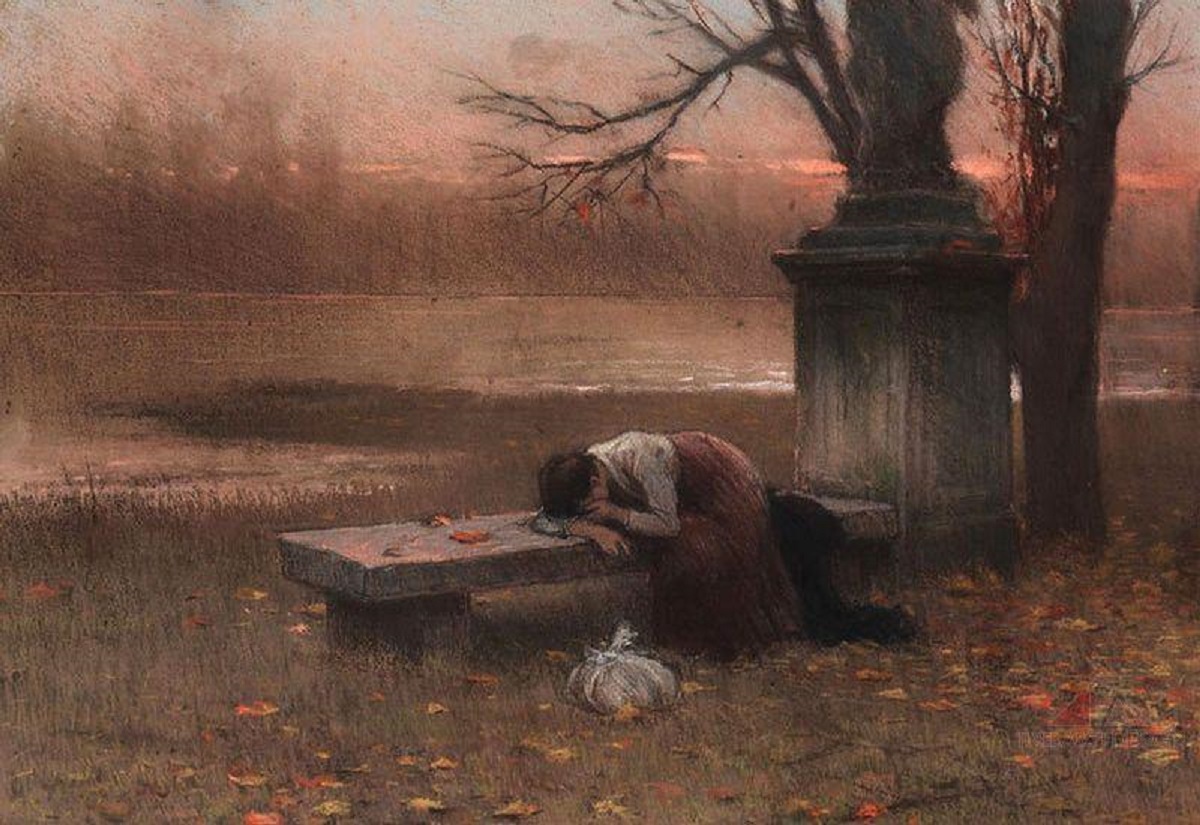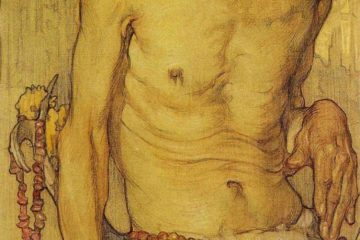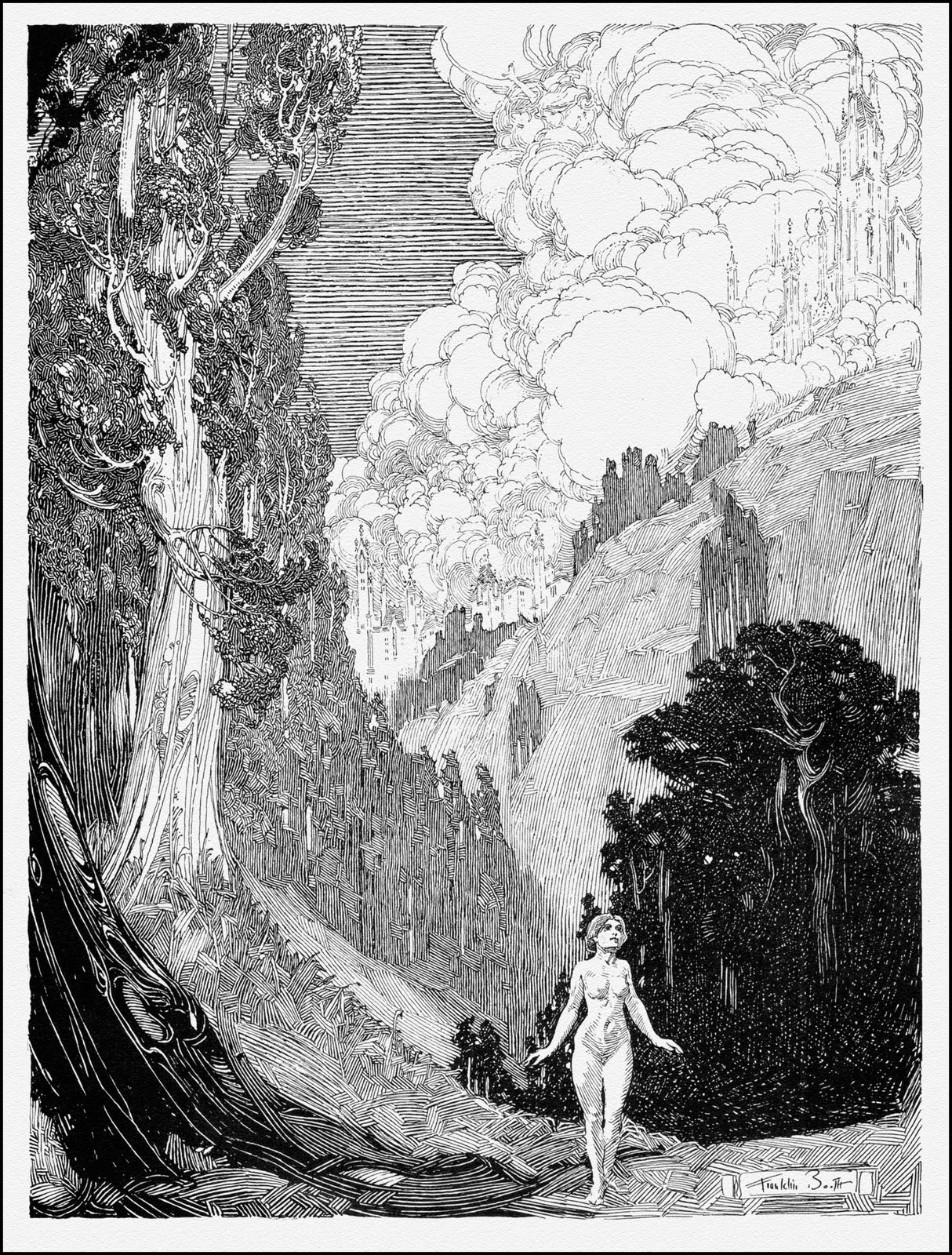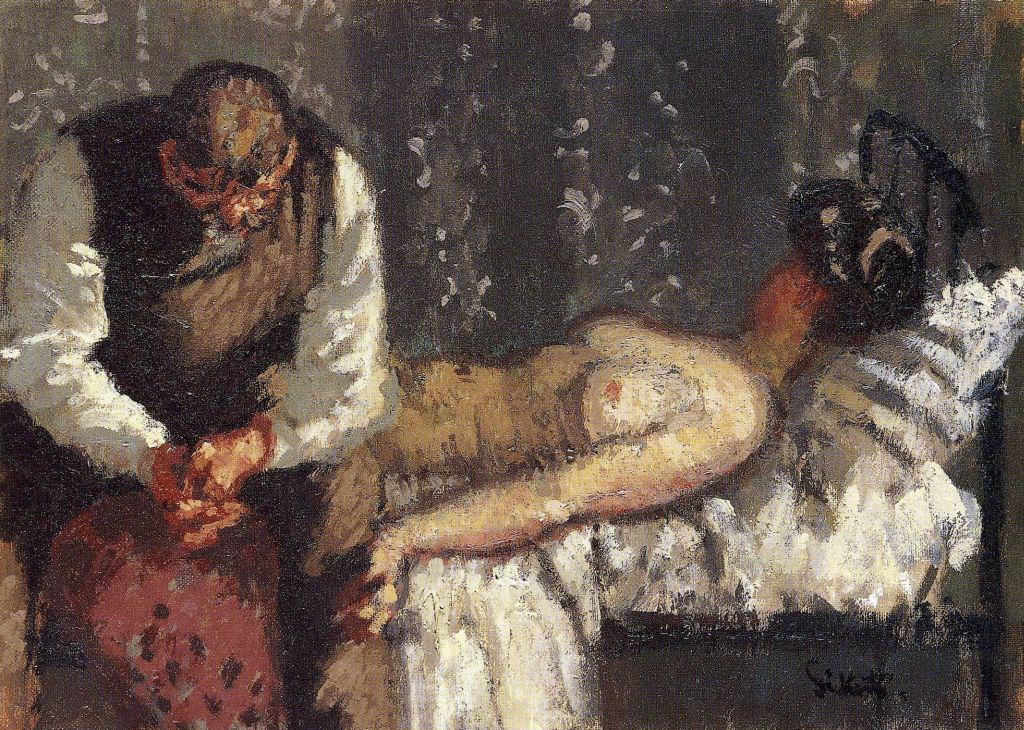Sometimes, I see an image and I feel that I’ve been in that situation, that I’ve lived through something similar. It might be the artist’s technique, or the medium that was used, or maybe it’s just something in the way the character looks. This Schikaneder painting is one that has always given me pause, based on all three ideas.
Schikaneder painted a piece that touches home for me and in my life, that edge of darkness that I fight so hard not to fall over. The woman in the painting has lost that battle, and it is clear that she is devastated by whatever event has occurred.
We can suspect, based on the surroundings, what events might have happened. The monument and stonework could indicate a cemetery, or a park. Despite our guesses whatever happened is not something that is clear to us, and in the end it doesn’t need to be because she represents that moment for all of us.
That moment, that loss of all hope as we fall into despair, is what this woman is facing. Schikaneder painted her to be mostly hidden in the way that she leans over. Especially with her hand held to her face, it tells us everything we need to know about her sadness without needing to examine her portrait.
It’s not just in the lack of portrait or profile, Schikaneder used a rough technique and muted tones to set this world into a depressive state. The roughness all around her, despite what should be sharp edges of stone or even branches, doesn’t allow the viewer to focus on anything but her. The muted colors bring down the viewer’s emotion, and looking for any brightness leads them back to the woman and her white top. Back, inevitably, to the sad darkness around her face.
Schikaneder painted many pieces that were contemplative, serene, even quite dark (his “Monreale” is also a favorite). For me, this one offers a strong sense of emotion without leading the viewer by the collar. Schikaneder painted a piece that lets the viewer absorb it all, to feel for this woman and to hope whatever horror she has faced will soon be over.
See previous editions and subscribe to new articles here.
References
“Immersed in thought” or “Abandoned”
Jakub Schikaneder (1855-1924)
Painted ca. 1890
More about Schikaneder
Note: While there are quite a few pieces by the artist available online, it’s difficult to find very much out about this image. It does appear on a few usually reputable sites, but some of them seem to have malware issues at the moment. Sorry, there’s no larger version that I could find. In fact, my own Google Plus post of the art from a couple of years back is one of the “large” references.



